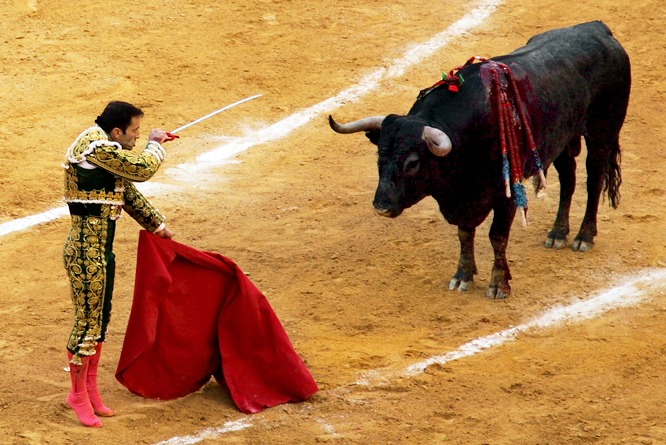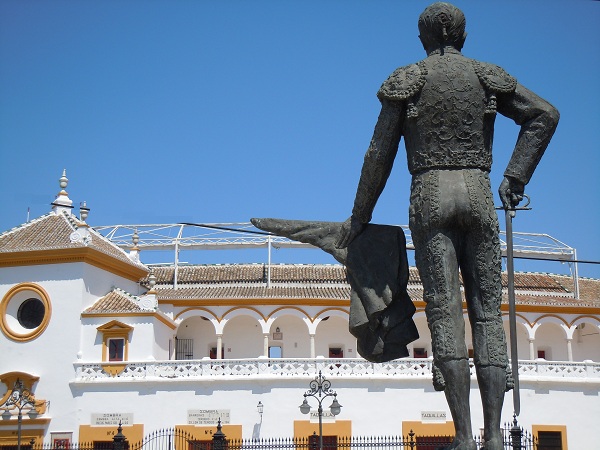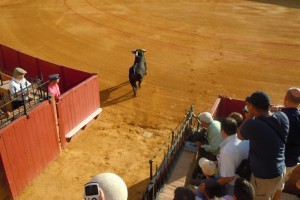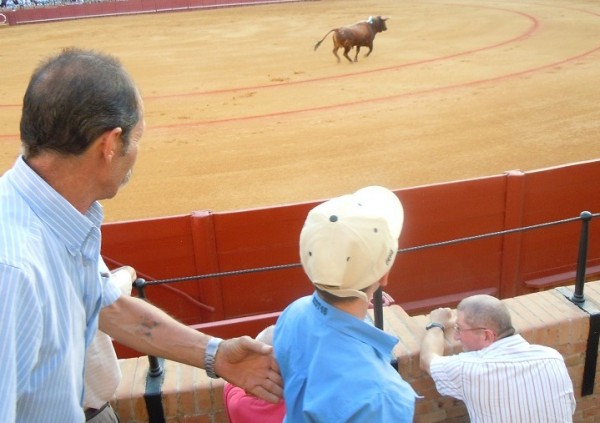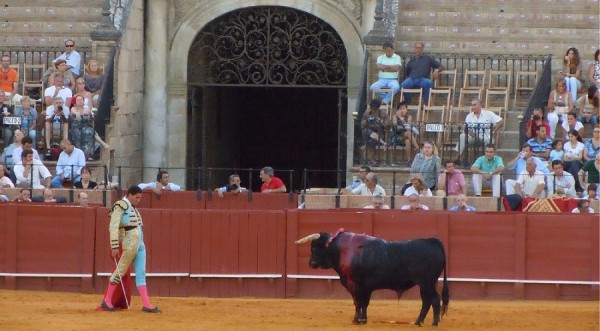Hear from a friend that there’s a bullfight this Saturday. It’s like 12 euros or something. “Do you want to go?” Sure you do, but say, “Remind me on Friday.” It’s better not to commit, just yet.
On the day of the corridas, pass by the few protesters on the paseo sitting cross-legged beside posters of mutilated bulls. They’re the quietest folks around, fanning themselves and drinking Cruzcampos. Feel the sun striking from every angle as you break out your own fan, even though the faint comfort just reminds you of the heat. Pass behind a few Germans who pause for a longer look at the protesters, possibly reconsidering their plans, and think back to the conversation at lunch.
